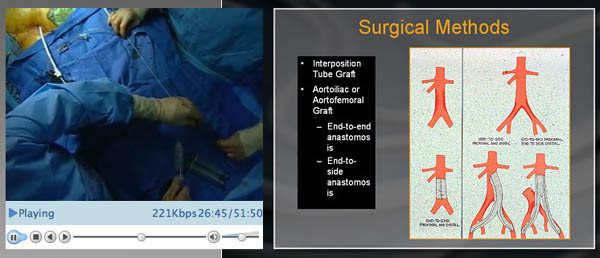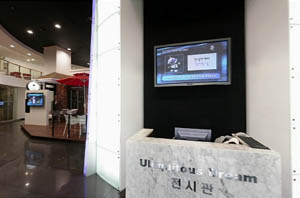Happy 4th.
Category Archives: General
mass culture vs technoculture?
 It’s the end of the year, and thus time for the jeremiads. In a December 18 Los Angeles Times article, Reed Johnson warns that 2005 was the year when “mass culture” — by which Johnson seemed to mean mass media generally — gave way to a consumer-driven techno-cultural revolution. According to Johnson:
It’s the end of the year, and thus time for the jeremiads. In a December 18 Los Angeles Times article, Reed Johnson warns that 2005 was the year when “mass culture” — by which Johnson seemed to mean mass media generally — gave way to a consumer-driven techno-cultural revolution. According to Johnson:
This was the year in which Hollywood, despite surging DVD and overseas sales, spent the summer brooding over its blockbuster shortage, and panic swept the newspaper biz as circulation at some large dailies went into free fall. Consumers, on the other hand, couldn’t have been more blissed out as they sampled an explosion of information outlets and entertainment options: cutting-edge music they could download off websites into their iPods and take with them to the beach or the mall; customized newcasts delivered straight to their Palm Pilots; TiVo-edited, commercial-free programs plucked from a zillion cable channels. The old mass culture suddenly looked pokey and quaint. By contrast, the emerging 21st century mass technoculture of podcasting, video blogging, the Google Zeitgeist list and “social networking software” that links people on the basis of shared interest in, say, Puerto Rican reggaeton bands seems democratic, consumer-driven, user-friendly, enlightened, opinionated, streamlined and sexy.
Or so it seems, Johnson continues: before we celebrate too much, we need to remember the difference between consumers and citizens. We are technoconsumers, not technocitizens, and as we celebrate our possibilites, we forget that “much of the supposedly independent and free-spirited techno-culture is being engineered (or rapidly acquired) by a handful of media and technology leviathans: News Corp., Apple, Microsoft, Yahoo, and Google, the budding General Motors of the Information Age.”
 I hadn’t thought of Google as the GM of the Information Age. I’m not at all sure, actually, that the analogy works, given the different ways in which GM and Google leverage the US economy — fifty years hence, Google plant closures won’t be decimating middle America. But I’m very much behind Johnson’s call for more attention to media consolidation in the age of convergence. Soon, it’s going to be time for the Columbia Journalism Review to add the leviathans listed above to its Who Owns What page, which enables users to track the ownership of most old media products, but currently comes up short in tracking new media. Actually, they should consider updating it as of tomorrow, when the final details of Google’s billion dollar deal for five percent of AOL are made public.
I hadn’t thought of Google as the GM of the Information Age. I’m not at all sure, actually, that the analogy works, given the different ways in which GM and Google leverage the US economy — fifty years hence, Google plant closures won’t be decimating middle America. But I’m very much behind Johnson’s call for more attention to media consolidation in the age of convergence. Soon, it’s going to be time for the Columbia Journalism Review to add the leviathans listed above to its Who Owns What page, which enables users to track the ownership of most old media products, but currently comes up short in tracking new media. Actually, they should consider updating it as of tomorrow, when the final details of Google’s billion dollar deal for five percent of AOL are made public.
there goes the neighborhood
Playboy Magazine is going digital. On September 13th, readers will be able to recieve the digital edition instantly, on their computers. According to the website, this new format will allow you to “zoom in to see every detail and archive your issues so you can access them anytime, anywhere.” Ah, progress…
penguin classics, the complete collection…if only

![]()
I was listening to a story on NPR called “Loading Up on Penguin Classics”. My son was running around the living room screaming, so I didn’t hear most of the broadcast. In my digital thoughtspace, I assumed “loading up” referred to software. Imagining an entire library, 1,082 classic titles, as electronic objects, stored neatly on my hard drive, is enormously appealing to my minimalist aesthetic and my nomadic digital worklife. However, as it turns out, the Penguin Classics Library Complete Collection is being offered as a 700 lb. load of paperback books (delivered free to anyone who can afford the shelf space and the $7,989.50 price tag). If only Penguin could catch a vision of THIS century and start making digital versions of the classics. I need screen-based books, audio books, lower pricetags, and I don’t think I’m alone. Penguin, are you listening? I’m clearing out virtual shelf space now, make me some ebooks!
deadline for panliterary awards extended
Drunken Boat, international online journal for the arts, has extended the deadline for its First Annual Panliterary Awards in Poetry, Fiction, Non-Fiction, Web-Art, Photo/Video, Sound. Submit up to three works. Winners in all categories will be featured in a subsequent issue of Drunken Boat, and will be invited to perform at future multimedia events and performances with all expenses paid. All other entries will be considered for publication.
Deadline Extended to: August 15th, 2005
Judges: Annie Finch, Sabina Murray, Alexandra Tolstoy, Talan Memmott, David Hall, and DJ Spooky
the paperless hospital
For all the advances in medical science, it’s incredible that the methods for organizing and distributing medical information have not kept up. A vast amount of medical error, both prescriptive and diagnostic, comes down to problems with the flow of information. All too often, the information doesn’t flow fast enough, or different information flows to different people, or the information can only flow to one person at a time, slowing down treatment and opening the door to infection.
The Guardian has a fascinating profile (via Smart Mobs) of the Oklahoma Heart Hospital (known as OK Heart), which has the distinction of being one of the first hospitals in the world to go entirely digital. A central computer connects to bedside screens in each room where patient records can be instantly called up. Consequently, doctors, nurses and pharmacists are always on the same page – the same digital page – greatly reducing the length of patient stays, and minimizing error. Of course, technology alone will not transform medicine – it’s the people that ultimately determine the quality of care – but the case of OK Heart is a compelling one.
There is a practical reason for using technology this aggressively: the longer you stay in hospital for the same treatment, the less chance you have of getting out of it alive. While the average stay for serious heart patients in the US is five days, the OK Heart average is 2.7 days, and falling. Doctors don’t have to chase x-rays and MRI scans, which are in the patient’s record before they get back to their room, and nurses don’t chase the doctor’s notes, which are transcribed remotely as soon as they are dictated.
It is a dramatic transformation in working practices: at the Indiana Heart Hospital, a digital hospital that runs along similar lines, internal research shows a reduction of 85% in medication errors, avoidable delays down by 65% and reductions in the cost of updating records by 45% compared with paper-based hospitals. Doctors also cut the time they spend updating records by a third.

It’s also worth visiting OK Heart’s website, where you can a watch a fascinating June webcast of surgeons at work on an Endovascular Abdominal Aortic Aneurysm. The surgeons talk the viewer through the procedure, while diagrams appear to the right for clarification. It’s a highly informative program and suggests how much the medical sciences will benefit when digital textbooks can bring the operating theater directly to the student.
korea’s ubiquitous dream hall
What if short-range time travel were possible, affording you a glimpse of the near future? What if it were as simple as buying a plane ticket? For anyone looking for tangible clues as to where today’s info tech proliferation might be leading us, a Korean Air jet to Seoul might be the closest thing to a time machine currently available. Over the past decade, South Korea has emerged as the ultimate high-tech society, making our own gadget-crazed culture look provincial by comparison. A huge portion of the Korean economy (domestic and export) is devoted to information communications technology, Korean cities lead the world in broadband penetration, and nearly three quarters of South Koreans subscribe to cellular phone services.
And that is only the beginning. The government recently announced its vision for “u-Korea,” a plan to achieve “ubiquitous communications” across the country through a blitz of products, services and infrastructure, as well as computer literacy programs targeting rural areas and the older generations that have been unable to keep up with Korea’s evolution toward network totality. An article in the Bangkok Post describes the initiative (via Smart Mobs).


Among the planned “ubiquitous” services are internet telephony, digital multimedia broadcasting, and enhanced wireless broadband coverage that can be enjoyed at speeds of up to 60 kilometers per hour. National Computerisation Agency (NCA) president Dr Chang-Kon Kim says the goal is for total broadband coverage across the country by 2007. When all of this comes together, Koreans will find themselves living in a totally wired society where handheld devices (a cross between a powerful PC and a mobile phone) are the keys to the environment.
To offer its citizens a window into the future, the Korean Ministry of Information and Communication has set up the “Ubiquitous Dream Hall,” an exposition space in downtown Seoul where visitors can explore the predicted technologies and begin to imagine new ways of life that might develop around them. There you can see a household where appliances, smoke alarm and stereo system are all wired into the same network, and family life centers around an interactive television; or a cafe where cappuccinos are ordered on wall-sized touch screens, then delivered by little service robots; or a car that instructs you where to drive; or a new form of interactive street advertising in which images on the floor change in response to pedestrians’ footsteps. The Dream Hall also features an exhibit charting the development of household and communication technologies over the past 30 years, projecting u-Korea into a historical continuum. Whether ubiquitous communication will result in a better life for Koreans remains to be seen, but the government is betting it will be a surefire strategy to keep the economy booming. I’d be concerned for Korea’s sanity.
See also in Ohmy News, Korea’s citizen newspaper:
“International Citizen Reporters Get a Taste of IT Korea”
“In the Future Your House Will Nitpick You”
report to congress: johnny can’t write
The National Commission on Writing released its third report to Congress on Tuesday. It quantifies just how much poor writing skills are costing taxpayers. According to the report many state employees must undergo remedial training in order to bring their writing skills up to state expectations. This training costs taxpayers $250 million a year and that does not include the incalculable cost of lost productivity. This report was part of an ongoing evaluation of our nation’s writing skills. The Commission’s first report to Congress, The Neglected “R”, called for improvements in writing education. Its second report, Writing: A Ticket to Work…Or a Ticket Out, A Survey of Business Leaders, examined the impact of poor writing skills on the private sector.
What does all this mean for the future of the book? Emerging technologies get a lot of air time on this blog, but very little has been said about writing itself. Clearly poor skills will have a negative impact on the future book, but what role, if any, are electronic technologies playing in the deterioration of writing? Certainly our reading behaviors are changing (see featured thread) but what of our writing?
the future of new york: can you stand the heat?
Heat and the Heartbeat of the City, a site created by Andrea Polli and commissioned by New Radio and Performing Arts, Inc. for its Turbulence web site. Has created a multimedia narrative that imagines the impact global warming will have on the city. The site presents sonifications (sound compositions created by the translation of data to sound) by Andrea Polli and a series of video interviews with Dr. Cynthia Rosenzwieg regarding the dramatic climate changes that will take place over the next 85 years. The project focuses on Central Park, “one of the country’s first locations for climate monitoring. As you listen, you will travel forward in time at an accelerated pace and experience an intensification of heat in sound.”
total recall: managing the memory machine
Bodies in Motion: Memory, Personalization, Mobility and Design, A conference currently taking place at Banff explores the possibility of “total data memory.” The conference gathers together nanotechnology researchers, medical researchers, and historians to examine the vast realm of memory materials gathered from increasingly ubiquitous devices such as: sensors, personal recording devices, and surveillance technologies. The conference imagines a world where information will be gathered by everything around us. Our clothes, the walls, we may even find sensors embedded in our bodies. This plethora of information could be used to construct an exhaustive virtual history. But is that something we want?
What drives the contemporary desire in the technology world for total data memory? How does data memory sit beside new kinds of memory capacities in other materials? Memory is closely linked to histories and the interpretations of history. Some of the best mobile experiences combine local memory, histories and place. What models of memory and mind are used in designing technologies that remember? What are the ethical implications of memory machines? What does this mean in time of war, increased security? How do we include the need, capacity, and desire to forget? How do we include trauma?
Marvelous summary of the questions facing us in the coming age of total recall.
